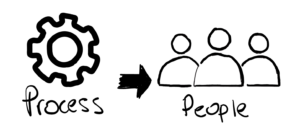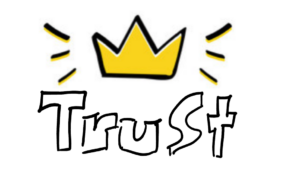DFX starts when design starts
DFM has always been a process we’ve felt confident and comfortable with – it’s one of the parts of the process we know best.
We initially set out to write a post about DFM, how we do it at FEG, and what we do differently that makes us so good at it. As you’ll see, that’s not what we ended up covering. In our research, we found plenty of blog articles and resources already doing a great job of explaining the basics of DFM. If you’re interested in learning the basics of DFM, check out these resources that do an excellent job of doing just that:
This post does not cover what DFM is. We didn’t want to re-hash something already existing – our goal with this blog is to provide novel insights into the engineering process. Instead, this post is about the special ingredient of our DFM: like much of the engineering process; we approach DFM as a relationship problem rather than an engineering problem.
This step connects the process with the people.

This relationship-focused approach applies to DFM and other similar processes: DFA, DFT, etc. Throughout the post, we’ll focus on DFM as an example, but the ideas we cover can be applied to others.
That’s what we’ll be covering today: what it means to approach DFM via a relationship lens, why you should do it, and how you can start applying this to your team’s process.
Let’s get started.
What does a relationship-driven approach to DFM even mean?
Our relationship-focused approach to DFM can be summarized by the following sentence:
When designing, put yourself in the shoes of the person impacted.
Traditionally, design for manufacturing means designing with an awareness of how your design impacts the manufacturing process.
A relationship-focused approach shifts this awareness to the people involved – the manufacturers and the assemblers – instead.

Manufacturing and assembly aren’t things that happen – someone is responsible for executing them.
This change in mindset turns DFM and DFA into exercises in communication and collaboration.
It prompts questions such as:
- How can we get more from this relationship?
- What steps can I take in my job to make the other person’s job easier?
- How can we work together more effectively earlier in the process to accomplish the same thing faster?
As you’ll see, thinking of DFM this way significantly impacts your approach.
But why should I care?
Trust is king
Great DFM relies on designers being receptive to feedback. It takes compromise. It’s about balancing what the designer wants to do and what the manufacturer can do. There needs to be trust in the relationship.
It’s similar to the relationship between an architect and an engineer. The architect has a vision for how a building should look, function, and feel. The engineer’s job is to turn vision into reality. In doing so, there are compromises that need to be made – an idea can be structurally infeasible, too expensive, etc. Over time, the architect’s design changes with these compromises to make the building a reality.
This same dance exists in DFM: A designer has a vision of how a part will look, function, and fit into the rest of the product. A manufacturer says the design must change based on available machines, cost, materials, etc.
Throughout this exchange, trust is king. It’s essential the designer can trust the manufacturer’s feedback rather than second-guessing them and questioning their expertise.
Everyone knows that feeling of working with a new person where you don’t have this trust yet. You’re not used to their process, and you don’t trust their results. Hearing the hard truth about something in your design that needs to change comes with a grain of salt. Does this person know what he’s talking about? What if they’re wrong? Further, manufacturers might not be able to comfortably speak their minds, instead holding back opinions that could benefit the project. Add language barriers, and the potential for miscommunication is guaranteed.
On the other hand, we all know the joys of working with someone you trust deeply. Knowing their results are accurate, justified and double-checked. You can take them at face value when they tell you some hard truth about your work because you know they have the project’s best interests at heart, and more importantly, you trust they know what they’re talking about.
You’re going to be working with these guys a lot
Our experience with DFM can be summed up with the following two points:
- Great DFM doesn’t happen on the first try.
- Great DFM is optimized for one supplier, not a compromise between multiple. Rather than trying to satisfy multiple suppliers’ requirements, it’s best to optimize for one maximally.
Realizing these facts means realizing the importance of this relationship. You’ve got one relationship where you’re spending a lot of time.
Therefore, any friction and efficiency is magnified.
No matter how excellent your team is at the engineering and design level, you rely on others to practice your designs. Often, the people responsible for this sit outside your immediate team, but in many respects, they’re as much a part of it as any other.
It’s natural for us to invest time, money and energy into the relationships of immediate team members with team building events, proactively being helpful, and resolving conflicts.
Why shouldn’t we go to the same lengths for those outside our team?
This is the essence of relationship-focused DFM.
How to foster a relationship-focused approach to DFM
Now that we’re on the same page with what relationship-focused DFM is and why it’s valuable, let’s get into some actionable steps to make it happen.
1. Emphasize a long-term view of the relationship.
Emphasize a long-term perspective on the relationship between design and manufacturing. This involves establishing a partnership mentality rather than a transactional one.
As outlined above, you’re likely going to work with these suppliers more than once. Whether within the same project’s lifespan or spanning multiple different ones, this relationship has long-term prospects – why not treat it as such?
Sometimes, taking one step backward now is worth it to take two steps forward in the future.
2. Focus on communication
Avoid misunderstandings by establishing clear lines of communication between design and manufacturing teams.
Before you start engaging, clear up any doubt on how the DFM process works: what the manufacturer expects from the designer and vice-versa, down to the details like file format.
You should be clear on the following:
- Frequency of communication. Are you meeting with the design team weekly? Monthly? Why?
- Method of communication. Are you using meetings? Face-to-face? Emails? You should be clear on how you’re communicating with the team and why. There are advantages and disadvantages to each, understand these and use them appropriately. We constantly advocate for the value of in-person factory visits.
- The language you’re communicating in. The language skills of the people involved should be a consideration – in international fields like engineering and manufacturing you deal with people from a vast array of backgrounds. Check out our blog post on how and why we learnt Chinese here.
- Who you’re communicating with. How many people should be at that meeting? Are you communicating with the right person to get this job done quickly and effectively?
For more information on the importance of communication and its various forms, check out our blog post on the topic here.
3. Expectations and accountability.
Clearly define roles, responsibilities, and expectations to avoid ambiguity and ensure accountability.
We go through a process at the start of each working relationship where we outline what we expect of the other team, and what they can expect from us.
It means there’s no confusion or room for uncertainty later down the road. Everyone knows what they need to get done.
It also helps to plan more accurately and effectively.
4. Maintaining design intent
While compromises need to be made, it’s important to stay true to the designer’s intention. If the design changes so much in the DFM process that it’s unrecognizable to the designer, something has gone wrong.
When this happens we run the risk of making the designer feel over-trodden. All their hard work has been lost.
This is not the grounds for an effective relationship.
The designer should feel the manufacturer is doing everything in their power to keep their vision alive while working within the constraints of the project (price, materials etc.)
5. Involve the manufacturer in the design process
Engaging suppliers early in the design process enhances collaboration and reduces the likelihood of design changes.
The earlier you do this the more work you save yourself. Measure twice cut once.
These processes (design and DFM) should happen in a parallel, cycle, not one and then the other (sequential).
It also provides the supplier with a sense of being involved in the strategy and design process, rather than simply being a cog in a machine.
Conclusion:
In conclusion, while Design for Manufacturing (DFM) is a well-established process, our approach at FEG takes a unique perspective. Rather than focusing solely on the technical aspects, we emphasize a relationship-driven approach. This means shifting the awareness from processes to people involved—designers, manufacturers, and assemblers.
By fostering a collaborative environment, we believe that a relationship-focused approach to DFM leads to more efficient, effective, and successful outcomes.


